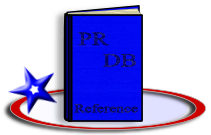
BASIC
ABORT
ASSIGNMENT
BOOLEAN
BRANCHING
COMPILE.TIME
CONSTANT
DIMENSION
DYNAMIC
EQUATE
EXECUTE
IO
MATH
STRING
SYSTEM
TABLE
TAPE
TBD
TRANSFORM
| A | Index: A B C D E F G I L N P R S T U W Idea | |
| ABORT | Stops execution and returns to command level. | |
| B | Index: A B C D E F G I L N P R S T U W Idea | |
| BEGIN CASE | BEGIN CASE and END CASE are designed to bracket a set of CASE statements. | |
| BREAK KEY | Determins whether or not a user can issue a break command to interrupt the execution of a program. | |
| C | Index: A B C D E F G I L N P R S T U W Idea | |
| CALL | Transfer control to a subroutine, with the expectation that control will transfer back when the subroutine encounters a RETURN. | |
| CASE | CASE statements are a cleaner form of cascading IF-THEN-ELSE. | |
| CHAIN | Use this command to transfer control from on program to another with no method for returning. | |
| D | Index: A B C D E F G I L N P R S T U W Idea | |
| DO | DO is a looping command. | |
| E | Index: A B C D E F G I L N P R S T U W Idea | |
| ELSE | It is used only in conjunction with another branching command. THEN is the "Yes" path. ELSE is the "No" path. | |
| END | Used by several different branching commands to end a conditional block of code. It can also be used to establish physical end of program, a point after which the compiler will ignore all text in a program. | |
| END CASE | BEGIN CASE and END CASE are designed to bracket a set of CASE statements. | |
| ENTER | Use this command to transfer control from on program to another with no method for returning. | |
| F | Index: A B C D E F G I L N P R S T U W Idea | |
| FOR | This is a looping command, which is a special form of branching command, designed to repeat a block of code. | |
| G | Index: A B C D E F G I L N P R S T U W Idea | |
| GO | Use this command when you want to jump to a different point in the code with no need to return. | |
| GOSUB | GOSUB allows a program to detour to a label within the same program and then resume from the original point when it encounters a RETURN. | |
| GOTO | Use this command when you want to jump to a different point in the code with no need to return. | |
| I | Index: A B C D E F G I L N P R S T U W Idea | |
| IF | This is the primary branching command. I is used to include and excludeblocks of code dynamically at runtime. | |
| INPUTIF | Allows several things to be mashed into a single, poorly thought out command. Use INPUT instead and increase readability. | |
| L | Index: A B C D E F G I L N P R S T U W Idea | |
| LOCATE | There are two syntaxes for the LOCATE. Both are explained here. | |
| LOOP | Initiates a DO loop. | |
| N | Index: A B C D E F G I L N P R S T U W Idea | |
| NEXT | Part of the FOR loop. | |
| P | Index: A B C D E F G I L N P R S T U W Idea | |
| PERFORM | Executes a command as if issued from the command line. | |
| R | Index: A B C D E F G I L N P R S T U W Idea | |
| READNEXT | ||
| S | Index: A B C D E F G I L N P R S T U W Idea | |
| STEP | Optional part of the FOR command. | |
| STOP | Stops execution and returns to command level. | |
| T | Index: A B C D E F G I L N P R S T U W Idea | |
| THEN | It is used only in conjunction with another branching command. THEN is the "Yes" path. ELSE is the "No" path. | |
| TO | Used in FOR, EQU amd EQUATE. | |
| U | Index: A B C D E F G I L N P R S T U W Idea | |
| UNTIL | Manges the exit from a DO or FOR loop. | |
| W | Index: A B C D E F G I L N P R S T U W Idea | |
| WHILE | Manges the exit from a DO or FOR loop. | |
| Idea | Index: A B C D E F G I L N P R S T U W Idea | |
| BRANCHING | Without branching, programs would execute each command once, in order. Branching allows us to repeat sections of code, perform some sections conditionally, and skip others based on external events. | |
